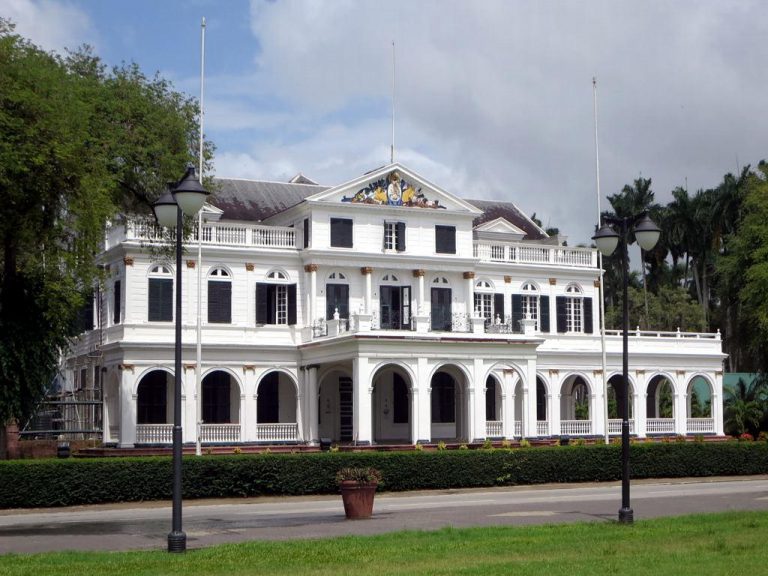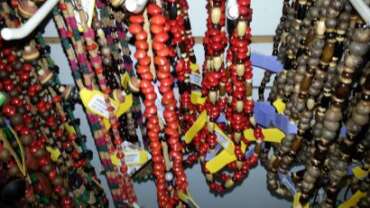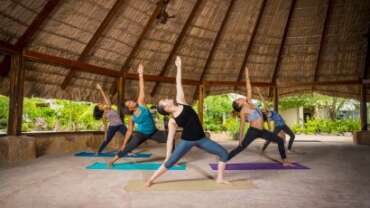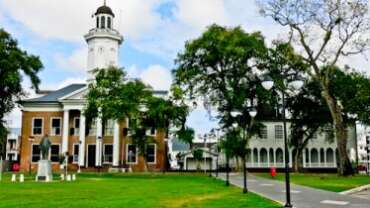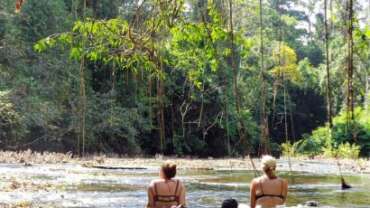Experiences in Suriname
Suriname is a small country in north east South America. It’s a combination of tropical rainforest, roaring rivers, Dutch colonial history, and great ethnic diversity. You can divide your time between the dense and untamed interior jungles and the lively modern cities with shopping, fantastic restaurants, and surprising night-spots. Locals include descendants of British and Dutch colonialists, African slaves, Indonesians, Indians, and Chinese indentured servants, and indigenous Amerindians. Communicating is fun with so many languages floating around, and so is the eating. Be prepared for spicy and fantastic everywhere you go. Here’s the best places to visit in Suriname!

Mariënburg
Founded in the 18th century as a sugar cane plantation, Mariënburg now has a production factory on site and is primarily a tourist attraction. The first railroad in Suriname was built to bring the sugarcane from the village into the city and you can still travel by train to get there. It’s a good way to see the country and a fun day excursion from Para.
Around Paramaribo
Just outside of the city you’ll find a phenomenal savannah white-sand forest, a jungle full of wildlife, and cold streams where the clean water runs black thanks to the fallen leaves. You can see saki monkeys, giant anteaters, tamarins, and a large number of exotic birds (maybe you’ll even spot a sloth). If you really want to leave the city behind for a bit, you can camp near Colakreek for a few days while you explore the forest and savannah.
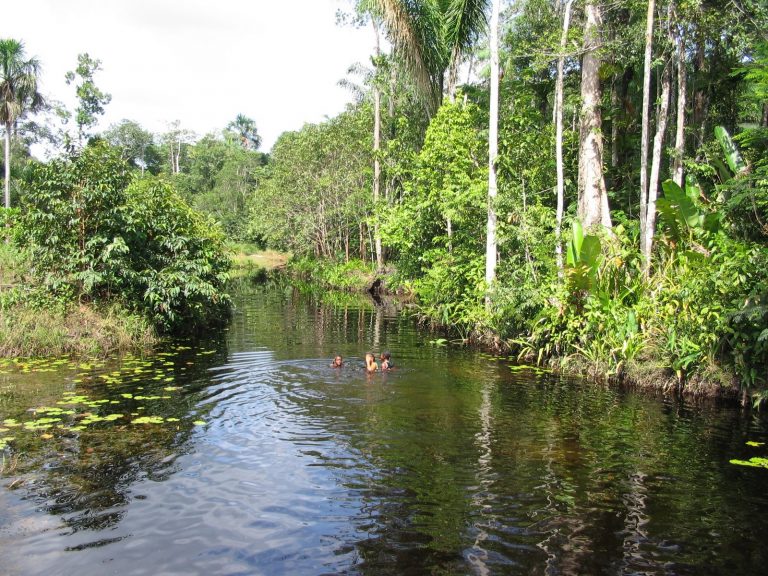
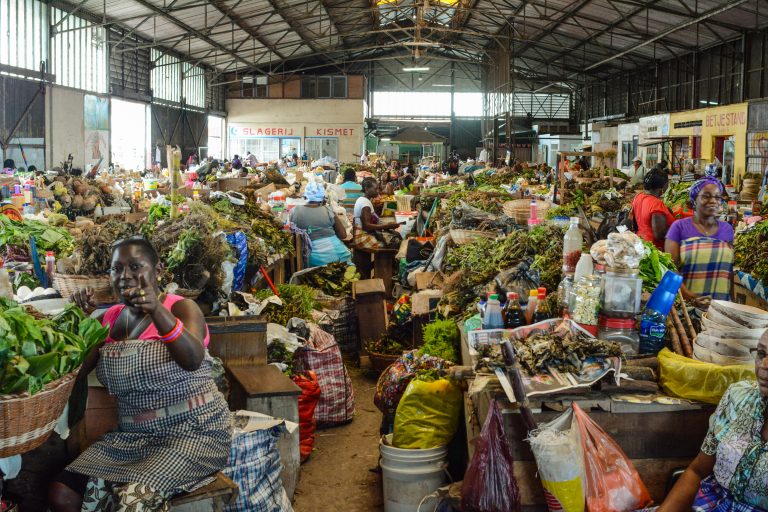
Central Market
As far as markets go, this one is fairly intense. This frenzied area in the inner city sells fish, meats, vegetables, and fruits, just like any other market and upstairs you’ll find a clothes bazaar. But this market also has a “Witches Market.” Also known as the Maroon Market, there is a separate entrance on Waterkant. Here you can buy shells, bones, herbs, and various mystery concoctions. If you want to come out of this frantic area intact, it’s best to go before noon.
Onafhankelijkheidsplein
Also known as Independence Square, Onafhankelijkheidsplein, is home to some of the most important buildings in Suriname: the colonial government buildings as well at the stately presidential palace. In many ways, it’s an average square which is perfect for an afternoon nap or a picnic lunch, you also might be lucky enough to stumble upon a signing bird competition. The birds, known as twatwa, are popular in Suriname and enthusiasts like to bring them together to compete. Don’t look to understand how the winner is chosen; the mystery is part of the fun.
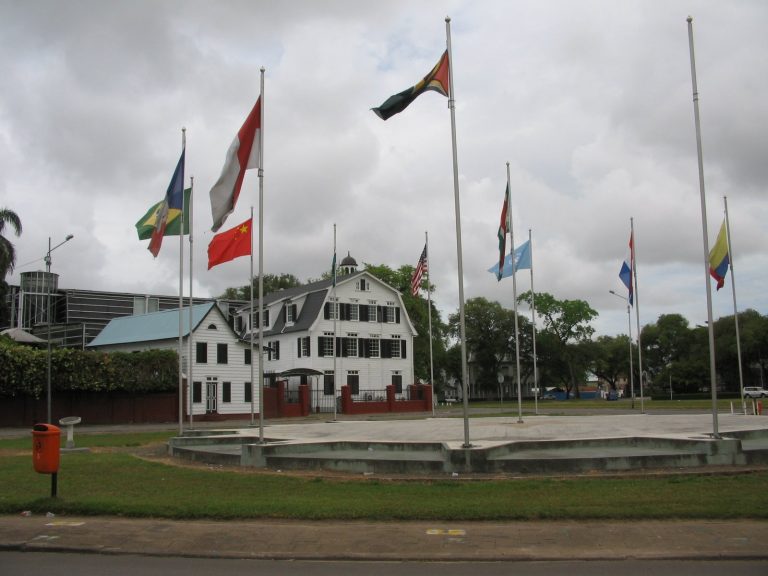
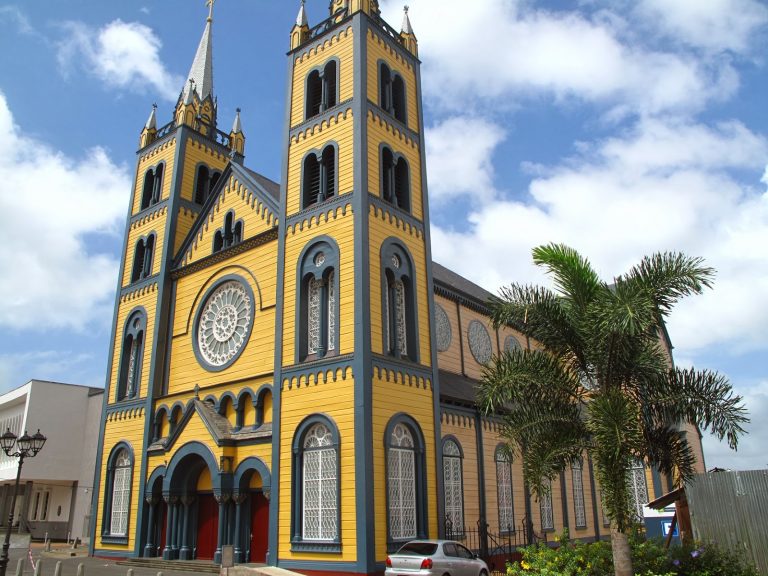
St Peter and St Paul Cathedral
Another part of Para’s UNESCO World Heritage site is the Roman Catholic St Peter and St Paul Cathedral. It’s the largest wooden building in the Western Hemisphere and was built in the 19th century. The exterior of the cathedral has long intrigued visitors. Painted grey and yellow, no one seems to know the exact reasons behind the colour scheme. In 2015 Pope Francis designated it as a minor basilica.
Suriname Mosque and Neveh Shalom Synagogue
The largest Mosque in the Caribbean is Mosque Keizerstraat, located in Paramaribo. It is a beautiful building with stunning gardens around it. No machinery was used during construction and thus it took 20 years to complete. Not only is it an impressive place of worship it’s unique because of its next door neighbour, the Nevah Shalom Synagogue. Built in the 19th century it has a sandy floor as a symbol of the Hebrews 40 years in the desert. Locals take great pride in the location of these two places of worship and feel it’s a reflection of their multi-ethnicity community.
Presidential Palace of Suriname and the Garden of Palms
Located in the capital across from Independence Square, the presidential palace is one of the best examples of Dutch colonial architecture in Suriname. Part of the inner city’s UNESCO World Heritage designation, it was built in the 18th century, and is still the presidents home. Most commonly used for diplomatic events thanks to the Garden of Palms attached to the property. This palm tree landscape has a wide variety of trees as well the capuchin monkeys and many tropical birds.
Arya Dewaker
This Hindu temple is the largest in Suriname and is located in Paramaribo. It’s arguably the most important in the country to the 30,000+ Hindu’s who live there. Designed by a Dutch architect, the building is a two-story octagonal building with meeting rooms, a library, and ceremony room. Everything in the temple is designed to reflect aspects of the sun and though there are no images of deities, you’ll find plenty of Sanskrit and Hindi symbolism. The architect works to combine the Dutch style with the ancient Moghul style from India, as well as a bit of Moorish design. The result it truly unique.
Joden Savanne
Just south of Paramaribo, on the Suriname River, is Joden Savanne, or Jews’ savannah. Established in the 17th century, it was originally an agricultural community that was developed by Spanish Jews fleeing persecution. Sugarcane plantations were the main crop and slaves were used here for a long time. From the beginning, the community faced difficulties from nearby sugar beet plantations They also dealt with disease, revolts by indigenous people, and heavy taxation. Eventually the community relocated to Para. You can visit the ruins of the first synagogue in the Western Hemisphere as well as the old gravesites there.
Brownsberg Nature Park
Roughly 80 miles from Paramaribo you’ll find the Brownsberg Nature Park. It’s 500 metres above sea level and was established in 1969. It’s mostly neotropical rainforest and is home to hundreds of unique and rare plant and animal species. You’ll enjoy a day of hiking through this wonderful stretch of nature.
Commewijne River
All along the Commewijne River, you’ll find old plantation properties as well as cacao, coffee, and sugar cane facilities. A tourist favourite is to rent a bike for the day and cycle the well-maintained routes around the plantations. Though, the most popular route to cross the river from Paramribo is by water taxi. They mostly take you to Frederiksdorp, an old restored plantation that is now a hotel and restaurant. It’s the perfect place to have lunch. You’ll also find Fort Nieuw Amsterdam, where you’ll discover artefacts left from the slave trade as well as Dutch engineered locks that hold back the river. Other places worth visiting include Peperpot Nature Park and Meerzorg bridge (popular with bird watchers).
Nieuw Nickerie
This busy border town was once one of the country’s main balata collecting centres. These days the port remains active and the economy is served by the banana and rice plantations here. If you’re hoping to explore Bigi Pan, a swamp and reservoir with over 100 bird varieties, Nieuw Nickerie is the last stop before Guyana. Be sure to tour the plantations and check out the port before heading on.
Central Suriname Nature Reserve
The largest of Suriname’s nature reserves, Central Suriname covers about 12% of the country’s total land mass and 40% of the plants and animals here are to be found only in the Guianas. One of the most beautiful attractions in the reserve is Raleighvallen, Raleigh Falls. It’s a long and low staircase of water that cascades down from the Coppename River. You’ll see spider monkeys, Guiana cock-of-the-rock, electric eels, and spectacular exotic birds. STINASU runs tours here as well and has lodging within the park. If you’re a hiker, you must make your way to Voltzbergisa, a 240m granite dome. It’s a two and half hour steep ascent, but you’ll be rewarded with a 360 degree view of the entire jungle. Not to be missed.
Galibi Coppename Nature Reserve
This lovely nature reserve was established in 1969 and is situated at the mouth of the Coppename River. It’s a haven for birdwatchers, home to the endangered manatee, and attracts hundreds of turtles during laying season (April to August). STINASU, The Foundation for Nature Conservation in Suriname, organizes several tours to and through the reserve. Their aim is to promote nature conservation, research, and responsible tourism. You’ll definitely get an education from your tour guide. If you go during laying season, you’re sure to see the giant leatherback turtles who return here year after year.
Paramaribo
If you could combine the American Wild West with Amsterdam, you’d get Paramaribo. A high energy city filled with things to see and do, it’s the most incredible capital in the Guianas. Roam around the inner city, a designated UNESCO World Heritage Site, and discover grassy squares lined with black and white Dutch colonial buildings, have lunch at one of the many Indian roti shops, and buy a few pieces of artwork from the Maroon artists selling their art outside the old Dutch forts. Parbo, as the locals call it, is a multi-ethnic city where synagogues and mosques are next door neighbours.



